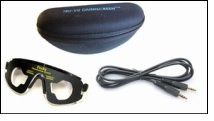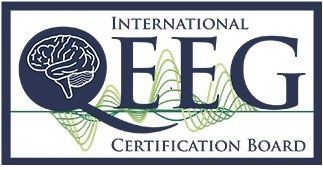
Photic Stimulation for Atlantis or ECHO with Stim flash software

Photic Stimulation for Atlantis or ECHO has been used by neurofeedback providers for decades. However, do not employ if there is a seizure risk!
HOW DOES BRAIN WAVE ENTRAINMENT WORK? Photic stimulation is the process of emitting pulsating light at a specific frequency. The pulses come from light-emitting diodes (LEDs) mounted inside the lenses of eyeglasses.
Photic stim works with ECHO or Atlantis and stimflash software
To purchase Photic stim glasses and software click HERE
Some entrainment systems require users to keep their eyes closed to prevent damage to the retina. The intensity of the pulsating light is adjusted for individual comfort. Photic stimulation generates repetitive flashes that reach the cortex via the optic nerve. Brain cells respond to visual and auditory stimuli by discharging electrical impulses known as evoked potentials. Visual and auditory evoked potentials can be measured by placing electrodes on the scalp at various locations. How long does it take the visual cortex to respond to a flash of light? When the stimulation is repetitive in nature, each stimulus follows the previous one by a short period of time (less than 500 milliseconds) and the successive evoked responses in the brain are found to overlap in time, so that the trailing end of one response is superimposed upon the beginning of the next. . . . In general, a repetitive flash produces an EEG response at the same frequency as the stimulation. (Collura, 2002, p. 49) Consequently, the repetitive flashes of photic stimulation are programmed to pulsate within frequency ranges that are common to EEG neurofeedback. For example, 10-Hz photic stimulation is in the alpha frequency bandwidth. Alpha bandwidth cannot be entrained from 8 to 10 Hz, but it can be entrained one step at a time (for example start at 8 Hz then increase by 1 Hz increments: 9,10,11,12 Hz). Finer steps are also possible, such as 10.0, 10.1, 10.2, 10.3, and so on. BWE programs may have a series of changing frequencies.
BWE devices are programmed according to frequency and time. For example, a custom program for ADHD can pulse at 10 Hz for 2 minutes, then 18 Hz for 2 minutes, and finally 12 Hz for 2 minutes—the cycle can be repeated over and over again. Why are those three frequencies helpful with ADHD?
Demos, John N.. Getting Started with EEG Neurofeedback (Second Edition) (pp. 238-239). W. W. Norton & Company. Kindle Edition.

